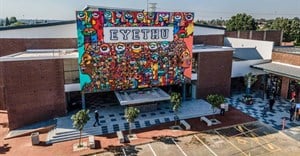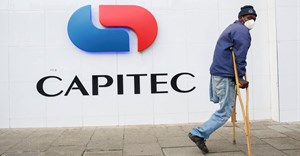
Subscribe & Follow
Capitec Bank's new headquarters unveiled
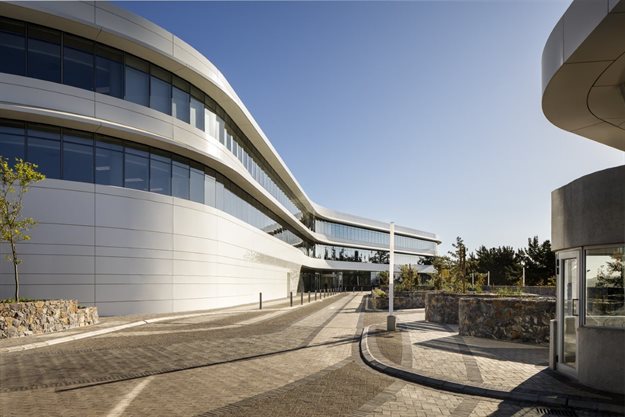
The superstructure wraps around itself, creating a ‘doughnut’ shape and forming a central triple-volume atrium - an internal ‘social spine’ at the heart of the building. White aluminium panels clad the building’s sinuous form, which is further accentuated with continuous ribbons of fenestration.
Internally, wide open-plan floorplates loop around the periphery of the atrium which are connected by a series of bridges and staircases. This intentional design element inter-connects the various departments, creating opportunities for chance collaborative encounters and personal interactions.
The company logo is embossed into the ceiling above reception. Overhead, clerestory windows and large roof lights ensure plentiful natural light and further facilitate the connection to the outside world. Meanwhile, touches of timber have been added throughout the office to introduce a feeling of warmth.
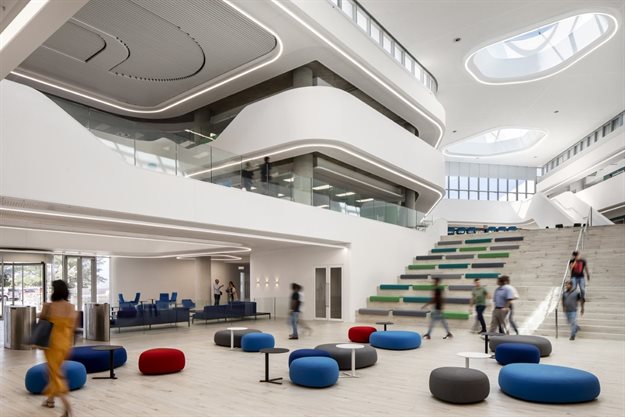
Void of hierarchal structure
The first and second floors, containing the office’s open-plan work areas, are largely void of hierarchal structure and closed-off cubicles. Embracing the concept of agile working, a raised access floor throughout the building facilitates maintenance and future upgrades to services. On each level, a total of four ‘cores’, containing centralised amenities, such as kitchenettes, meeting rooms, breakout areas, lockers, bathrooms and fire escapes, serve to augment the floorplates into departmental zones.
Throughout the building’s ‘social spine’ there are a variety of breakaway areas; from a large ground-floor lounge at reception for guests to await meetings and co-workers to engage, to pause areas on bridges, and an internal landscaped courtyard for staff to rest. There is a full-service kitchen and canteen area, a small satellite café, and a multifunctional stadium staircase/seating area for company presentations and talks. Other facilities include a recording studio, Capitec Bank branch and an ATM lab facility.
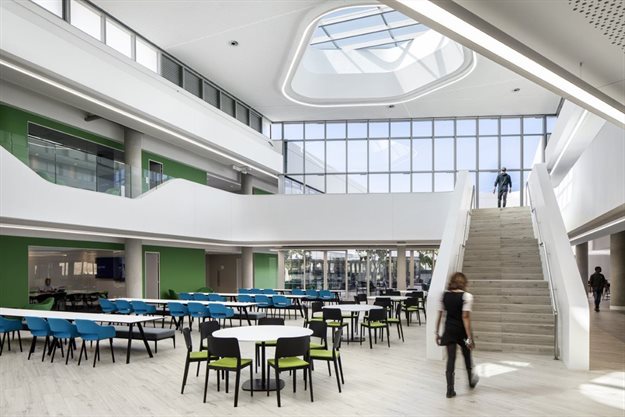
Environmental sustainability
Natural light is optimised via clerestory glazing, roof lights and internal courtyard windows, while artificial lighting is zoned and activated by sensors. Environmental performance modelling directly influenced the articulation of the façade. The process informed areas of fenestration, glazing specification, glare control measures and solar shading. Performance modelling also informed the primary ordering of the internal layouts. For example, a circulation zone was provided along the external perimeter of the building to distance resident desks from sources of radiant heat. Furthermore, the thermal mass of the concrete building superstructure is exposed in various areas and the basement is naturally ventilated.
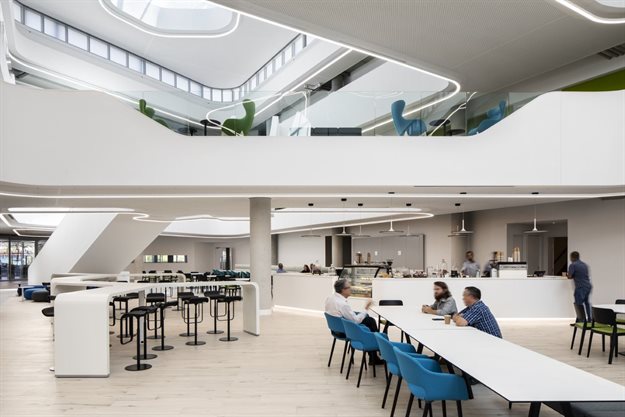
Other sustainability measures include ice storage to offset peak electrical demands, a greywater system, water-saving fittings, building management system for extensive metering and monitoring, double glazing throughout, use of good quality and low maintenance materials, locally sourced materials, water-efficient heat rejection, zero ODP (ozone depletion potential) refrigerants, use of low VOC (volatile organic compounds) finishes, borehole and rainwater harvesting for irrigation, water-wise planting and refuse management to encourage separation of waste and recyclables.
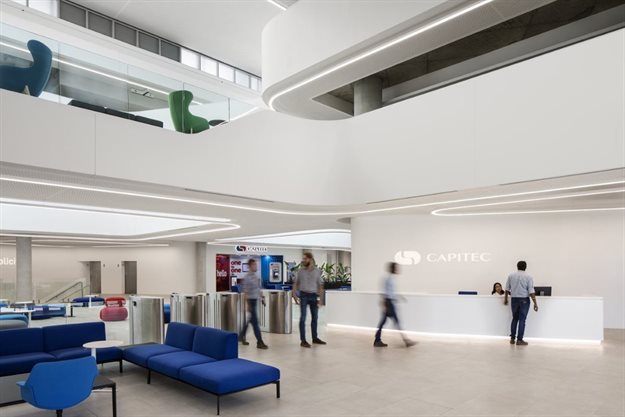
Employee well-being
To promote employee well-being, the building is purposefully limited to only two passenger lifts for its workforce of approximately 2,000. This is supplemented by a variety of generous feature stairs to encourage walking and limit the use of confined lift spaces. As such, the fire escape stairs were designed for dual functionality; where the quality of finishes were upgraded, they serve as ‘communication’ stairs.
Further promoting employee well-being and to ensure that the needs of universal access were met, Capitec engaged with a disability consultant and an acoustic specialist early on in the design process. The recommendations of both specialists were incorporated into the building. For example, sound-absorbing materials and acoustic separation between meeting rooms were included throughout the building to achieve a specified performance in terms of decibel reduction. Additionally, and beyond the requirements of the regulations, consideration of car parking locations, emergency evacuation, ablutions and vertical circulation, are all examples of how the spirit of universal and inclusive access have been addressed.
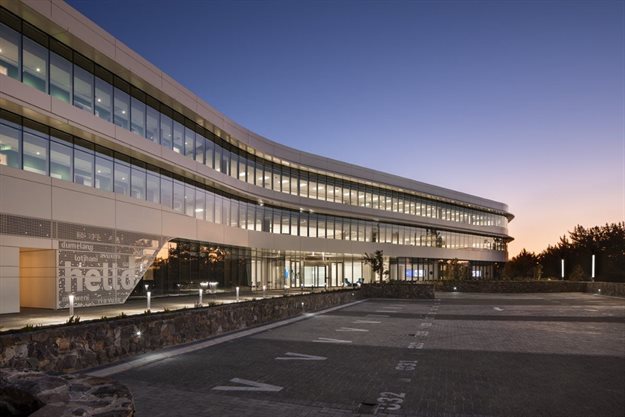
Furthermore, Capitec rehabilitated a neighbouring area of public open space to be used by staff and the broader community as a recreational area for activities such as walking and running. The building also provides cyclist facilities and purpose-designed showers.
Looking to the future, the development incorporates a car parking structure on an adjacent site, designed for future adaptation into an office should there be a modal shift towards public transportation and less reliance on private cars.












